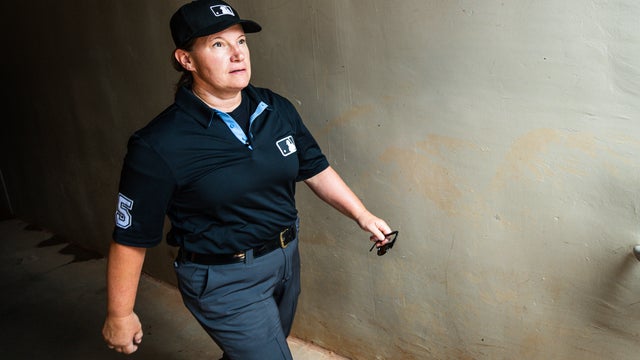

Beyond BMI: New Ways to Measure Obesity, Explained by a Doctor For decades, Body Mass Index (BMI) has been the go-to metric for assessing obesity, despite its well-documented limitations. But the scientific community is increasingly recognizing that BMI, a simple calculation of weight divided by height squared, paints an incomplete and often misleading picture of a person's health. Dr. Anya Sharma, a leading expert in obesity medicine, explains the emerging recommendations for a more nuanced approach. "BMI's biggest flaw is its failure to differentiate between fat mass and muscle mass," Dr. Sharma explains. "A highly muscular athlete might have a high BMI, classifying them as obese, while someone with a significant amount of visceral fat, the dangerous fat surrounding organs, might have a normal BMI." This inherent inaccuracy leads to misdiagnosis, inappropriate interventions, and stigmatization of individuals. New recommendations are moving beyond the singular focus on BMI, incorporating a multifaceted assessment that considers several key factors: Body Composition Analysis: Techniques like DEXA scans (dual-energy X-ray absorptiometry) and bioelectrical impedance analysis (BIA) provide a more accurate measure of body fat percentage and its distribution. "These methods distinguish between lean mass and fat mass, providing a much clearer picture of a person's health risks," says Dr. Sharma. DEXA scans are particularly accurate but also more expensive and less accessible. BIA is readily available but can be affected by hydration levels. Waist Circumference: This simple measurement provides a crucial indicator of visceral fat, strongly linked to metabolic diseases like type 2 diabetes and heart disease. "A high waist circumference is a significant risk factor, regardless of BMI," Dr. Sharma emphasizes. The specific thresholds vary slightly depending on ethnicity and gender, but generally, a larger waist circumference indicates a higher risk. Metabolic Measures: This includes assessing factors like blood pressure, blood sugar levels (fasting glucose and HbA1c), cholesterol profiles, and markers of inflammation. "Obesity is a complex metabolic disorder, not just an aesthetic concern," Dr. Sharma points out. "These metabolic markers provide a more comprehensive view of an individual's overall health status." Imaging Techniques: While not routinely used for obesity assessment, techniques like MRI and CT scans can provide detailed information about fat distribution and organ health. These are typically reserved for individuals with high-risk profiles. Dr. Sharma concludes, "The future of obesity assessment lies in a holistic approach. We need to move away from a reliance on a single, flawed metric like BMI and embrace a comprehensive evaluation that accounts for body composition, fat distribution, metabolic health, and individual factors. This approach will lead to more accurate diagnoses, more effective interventions, and ultimately, better outcomes for individuals struggling with obesity." This shift towards a more nuanced understanding of obesity is crucial to reducing stigma and developing more personalized and effective treatment strategies.

, or BMI, has long been criticized as a flawed method for measuring — and now a group of experts is sharing new recommendations.
BMI is a that uses a person's height and weight ratio to assess whether they're underweight, normal weight, overweight or obese, although it is not a direct measure of body fat.
In the report, published Tuesday in , more than 50 experts proposed a new way for medical professionals to define and diagnose obesity that puts less emphasis on BMI.
While the new recommendations still uses BMI as a "first pass" screening tool, it drills down into whether a person has pre-clinical obesity or clinic obesity with other means of measure, Dr. Céline Gounder, TheNews medical contributor and editor-at-large for public health at KFF Health News, said on " Wednesday.
"So what that means is, do you actually have excess fat?" Gounder said, explaining there are three main ways to measure that.
1. Waist circumference, or a waist to hip ratio: "So if your waist is over 35 inches for a woman or 40 inches for a man, that means you do have excess fat, or are you apple-shaped versus pear-shaped?" Gounder said.
2. Directly measuring body fat: "Some older women might be familiar with a DEXA test to assess for bone thinning or osteoporosis. That can also be used to measure body fat," Gounder said.
3. Effects on your daily living activities: "Can you climb up and down stairs? If you're not able to because of your weight, that would be clinically obese," she said. "Do you see damage to your organs, your kidneys, your heart, et cetera because of your obesity? That would be clinical obesity."
The updated recommendations were endorsed by 76 organizations worldwide, including scientific societies and patient advocacy groups, the authors of the report said, though it's not clear how widely or quickly they could be put into practice. The report acknowledges that shifting to these recommendations will bring both cost and workforce challenges.
According to the , BMI is an "inexpensive and easy screening method" that is "strongly correlated" with weight-related medical conditions. But in recent years, BMI has come increasingly under fire with critics denouncing the method as not just unreliable but sexist and .
"BMI is really looking at how much do you weigh relative to your height. But not every, say, six foot man who has the same weight is obese versus healthy. Some of them may actually be strapping, muscular guys versus somebody who is truly overweight or obese. So we're trying to distinguish between this," Gounder said.
For example, many professional athletes are considered clinically obese based on the BMI scale, because it cannot distinguish the weight of muscle from the weight of fat.





